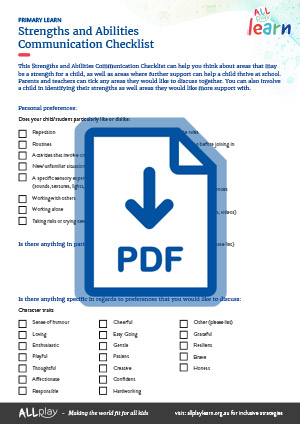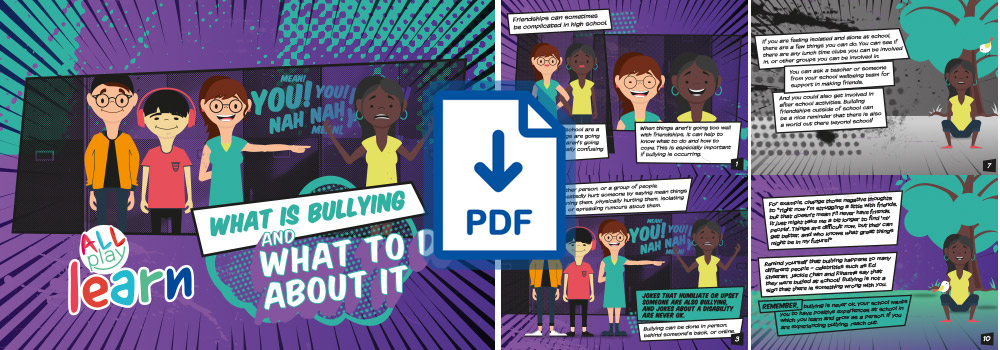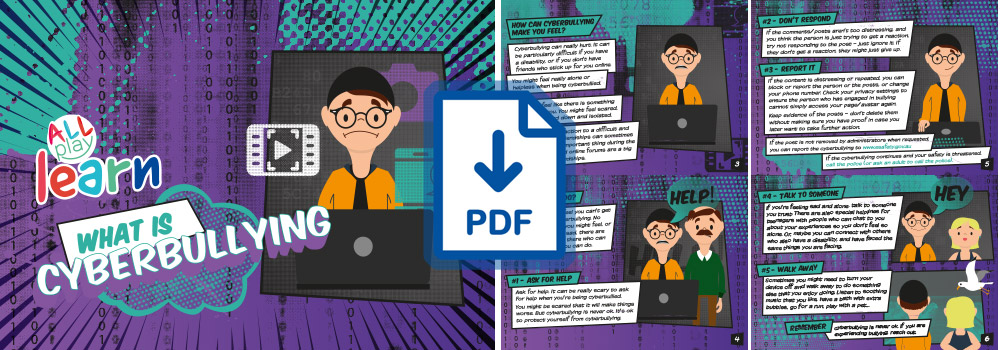
Social Skills
On this page:

About social skills
Socialising with others requires many skills. These include being able to express thoughts or ideas, listen and understand what others say, show an interest in others, and share or take turns. Non-verbal behaviours are also important for socialising. These include using and understanding gestures, reading facial expressions, and knowing how close to stand to others and whether it is okay to touch someone.
Many things impact the way we interact with others. This includes personality traits (e.g. shy and quiet versus outgoing and energetic), mental health (e.g. feeling sad or low, compared with feeling happy and energised), ability to manage emotions (e.g. coping with frustration), and cognitive and communication skills (e.g. talking; using and understanding gestures; maintaining attention during a conversation; reading facial expressions; controlling impulses).
All students will take time to learn and acquire social skills, but some students process and understand social situations differently to others, and so may experience difficulties in making and keeping friends. Explicit teaching of social rules and skills, with lots of opportunities to practice, can help these students to acquire the skills they need to navigate social situations. It’s important to remember that when a student is not able to fully participate, it is usually because of the systems and structures in place, and a lack of understanding, not because of their abilities. This is why in addition to helping a specific student acquire social skills, approaches like peer mediation, in which peers are supported to acquire the skills they need to fully include another student, and supporting peers to understand different disabilities, can also help break down barriers to social participation. Some students with disabilities may have strong social skills, but experience exclusion by peers. When this is the case, consider using peer mediation and other approaches to exclusion and bullying, rather than targeting social skills.
While most of the social skills strategies to follow will be beneficial for all students, they may be particularly relevant for some specific groups of students. Use the tabs below to explore when and why evidence-based positive behaviour supports may be particularly helpful for some students.

Evidence-based strategies
- Consider demonstrating social skills that are important at school, or have another student demonstrate. Another option is to watch videos that model a social skill then give opportunities to practise. This strategy may be particularly important for students who are having difficulties interpreting or understanding social situations, or who learn best with additional supports.
- Some students can learn to practise and self-monitor a social skill. Help them set goals and decide on how they will reward themselves for reaching their goal. For some social skills, a reminder like a small watch beep can help a student check if they are using that skill.

Best practice tips
Teach social skills
Encourage everyone to participate
Set clear social rules
Access stories about social skills
- Some students may pick up these social skills when instructions are directed to a group (e.g. “If anyone needs a whiteboard marker, they should ask other students if they can borrow one”), while others may need individualised and explicit prompts (e.g. “Look at Ruan, and ask him ‘Can I please borrow the whiteboard marker?’”). Where possible, look for opportunities to provide these prompts discreetly (i.e. without drawing the attention of other students).
- Come up with activities that get everyone involved. For example, avoid games where students get eliminated. Similarly, consider picking teams or partners so no-one is left out.
- Teenagers who struggle with social skills may be left out by other students. Setting clear rules for the class about how to treat each other may help. Consider establishing a clear system to manage any exclusion, teasing or bullying.
- Consider reading stories that show or talk about how to act in different social situations. Access AllPlay Learn’s stories What is bullying and what to do about it and What is cyberbullying under relevant resources below.

Other considerations
- Some students may not understand social norms about personal space without clear instruction. Consider teaching all students about boundaries. Be specific. For example, talk about how close to stand to others and what is and isn’t appropriate to ask/say.
- It may be helpful if sexuality education includes content about social rules and norms. Some students may need to be taught whether (and where) it is ok to touch someone and in what situations.
- Refer to the ABC approach for more information on how to reduce challenging behaviour by supporting the young person and promoting more helpful behaviour, and our emotions page for more information about supporting a young person with managing their emotions.
- Students with social challenges may also experience autism, attention-deficit/hyperactivity disorder (ADHD), oppositional defiant disorder, blind or low vision, Deaf, deaf and hard of hearing, or anxiety.
- Refer to information about these areas to help support the student

Relevant resources
Visit our resources page for a range of resources that can help to create inclusive education environments for students with disabilities and developmental challenges. Some particularly relevant resources for supporting students with social issues include our social inclusion resources, and:



